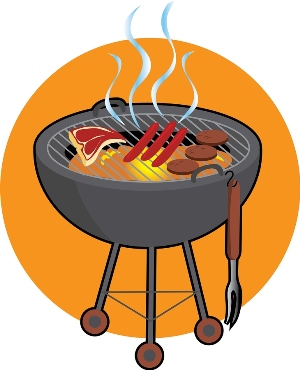 If you have dogs, you probably love them just like family, and want to treat them as such. This means that when the weather becomes extreme, whether extremely hot or cold, you want to be sure your dogs are as healthy and comfortable as possible.
If you have dogs, you probably love them just like family, and want to treat them as such. This means that when the weather becomes extreme, whether extremely hot or cold, you want to be sure your dogs are as healthy and comfortable as possible.
One of the extreme weather conditions to be aware of is heat in the summer. This is especially important if you live in a hot climate like a desert area, but no matter where you live, you should be aware of the health complications that dogs can experience when they aren’t kept cool and don’t have access to fresh, cool water.
The following sections will go over some things to be aware of with your dogs in the summer heat, and provide helpful tips for keeping them healthy and happy all summer long.
Health Concerns for Dogs in Extreme Heat
The first thing you need to know is what exactly your dog might be facing in the hot, summer heat. This of course will depend on your climate and how often your dog is out in the heat, but there are several health concerns to be aware of.
Foot Pad Burns
The first health concern for dogs who are outside in the summer is burning their foot pads. You may not consider this to be an issue, but your dog’s paws are sensitive to the hot ground and asphalt just like you. A good rule of thumb is that if you can’t stand on the ground outside barefoot without it burning, your dog shouldn’t either.
When it is a hot day, stand outside with no shoes on first to test the ground, then determine if it is okay to walk your dog on that surface. Carrying them to the grass might be necessary.
Sunburned Skin
Another surprising health concern for dogs in the summer is sunburn. Yes, their skin can burn just like yours can. If your dog has dark, thick fur, it works as clothing to protect their skin from burning. However, if you have a dog that is shaved or has a light coat with skin exposed, it could burn if they are out in the sun for too long.
In this case, put baby sunscreen on your dog’s coat when they are going to be outside on hot days for an extended period of time, and make sure they get an adequate amount of shade.
Heat Stroke
Heat stroke is another concern for dogs in the summertime. You want your dogs to have enough cool areas and fresh water to prevent heat stroke. If you know you have a dog that is less tolerant of the sun, try to keep them inside in the air conditioning as much as possible.
Provide Adequate Shade
As you might guess, providing your dog with enough shade during the summer is one of the best things you can do. It might not be realistic for your dog to be indoors at all times, such as when you are at work or when you are letting your dog out to get some fresh air and play.
Finding Enough Shade
In these situations, make sure your dog has enough shade and cool areas outdoors. If you have cool grass with big trees, that is perfect. On the patio, create more shade either by getting tall potted trees or with a canopy set up.
Make sure your dog is not chained up outside in an area where they are stuck in the blazing hot sun without being able to find a cooler spot. They should never be restricted in an area where they are just trapped in the sun, burning their skin and possibly causing heat stroke.
A good rule of thumb for the heat outside – if it feels hot to you, it feels hot to your dog. Are you sweating within minutes of standing outside? If so, your dog is probably feeling that heat as well, so it is up to you to help them find a cool spot.
The Importance of Fresh, Clean Water
The next thing you need to provide your dog in the summer to keep it healthy is fresh, clean water. If the water is kept on the patio where it gets hot, then the water will get hot very quickly and your dog won’t touch it.
Tips for Providing Fresh, Clean Water
- Put the dog’s water bowl on a cool spot on the patio, perhaps in the shade or under an umbrella.
- Have more than one bowl of water if your pet will be alone for a while, making sure each bowl is in a shaded area.
- Put ice cubes in the water when you set the bowl out, which will help keep the water cooler for longer.
- Change the water often so it is always clean and fresh for your dog.
- If you are concerned about the water getting hot, place it on a cooling pad instead of directly on the hot ground or concrete patio.
These tips are very easy to accomplish and will ensure your dog has enough fresh water. Water is absolutely essential for your dog in the hot summer season. They need it to cool off and it will help prevent heat stroke.
Traveling in the Summer
Another thing to keep in mind is that if you are traveling during the summer with your dog, they need extra precautions with their water.
Not only should you never leave your dog in the hot car and bring them outside whenever you go outside, but you should bring bottled water kept in an ice chest so that it is always cool. Bring bowls with you to help your dog drink water as often as possible.
Ways to Keep Your Dog Cool
There are even more ways you can keep your dog cool and happy during the summer. These methods are not only good for health reasons, but for your dog’s happiness and vitality.
If you have ever been outside in 100-degree weather, you know that it can cause mood swings, reduce your energy, and just make you feel lousy. Your dog might experience the same thing, depending on their breed and how much they enjoy the heat.
Here are some other ways to keep your dog cool during the summer:
Make Frozen Treats
Who doesn’t love treats? Your dog already loves these fun little snacks, but they are even better when frozen. It’s like an iced treat for your dog that is fun, delicious, and keeps them cool on hot days. Here are some options for frozen treats that are good for dogs:
- Chicken broth iced pops – The first frozen dog treat is to fill an ice cube tray with chicken broth. You can also add other ingredients your dog likes, such as banana pieces or even broken up pieces of their favorite treats or dog bones. Once it freezes, pop them out as needed for your dog.
- Frozen fruit pieces – A simpler option is to cut up pieces of your dogs favorite fruit and popping them in the freezer. Just make sure they are big enough for your dog to munch on without trying to swallow it hole and choke on it. Bananas and strawberries are great for this one.
- Peanut butter ice cubes – You can also fill up ice cube trays with some peanut butter, mashed banana, and a little liquid, then wait for it to freeze.
Use Ice Cubes in their Food Bowls
As mentioned previously, putting ice cubes in your dog’s water bowl is amazing and easy to do. It will keep the water cold for a longer period of time, and a lot of dogs have fun with ice cubes. They might want to pull them out and lick them or munch on the ice, which helps keep your dog cool while having a little fun over the summer.
Have Fans Near Your Dogs
Don’t have air conditioning? No worries! Just put a fan on inside your home near where your dog likes to nap or play. As long as it isn’t too hot inside, it won’t’ blow hot air around, but instead allows your dog to stay a bit cooler.
Put Out Kid Pools
Lastly, you can find a shady spot in your backyard and put a little kiddy pool there. For dogs who want to cool off and love to play in the water, this is the best idea. Fill it up just a little bit with cold water from the hose and let your dogs jump in and out as much as they want during the summer.
Tips for Walking Your Dog in the Summer
The next thing you might be wondering about is how and when to walk your dog. After all, you can’t keep them indoors in the nice air conditioning all day. Your dog needs to go potty, and needs regular exercise and fresh air.
Here are some tips for walking your dog, even during the hottest, triple-digit summer.
Walk Your Dog Early or Late in the Day
The first way to walk your dog in the summer is to do so during the coolest parts of the day. This often means taking them early in the morning and late in the evening. Avoid the hottest time of the day, which is usually between 1pm and 4pm, depending on where you live.
This might mean getting up a little earlier to take your dog out, but it is good for them to get exercise when they won’t be struggling from the 90 or 100-degree weather.
Be Careful with Hot Surfaces
You should never let your dog walk on hot surfaces without testing the ground first. Surfaces like concrete and asphalt get very hot when the sun shines down on it, much hotter than you might think.
If you can’t stand on it more than a few seconds without feeling like your feet are burning, imagine your dogs walking on it on their bare foot pads.
You can either pick up your dog and carry them to grass, or get them little booties for their feet to protect their paws on the hot ground.
Take Them to the Park
If you live somewhere that doesn’t have a lot of cool grass for your dog to walk on and potty, it might be a good idea to bring them to a local park or dog park instead. This allows them to get exercise and run around on the grass, without burning their little paws.
Protecting Your Dog from Disease
Now that you know ways to keep your dog cool and protect them from sunburn and burned foot pads, you need to look at other health concerns dogs might experience in the summer.
A common one is dealing with parasites and insects. These tend to come out during the hotter months of the year, which means you have to be extra cautious for them so they don’t make your dog ill.
Insects like mosquitoes, spiders, ticks, and fleas all run rampant in the summer. If you your dogs walking in tall brush, ticks might be a big problem, so be sure you have proper tick repellent on your dog.
Many flea medicines also protect from ticks. Become familiar with checking your dogs for signs of ticks so you can remove them quickly.
Have a really good flea control medicine applied as needed to keep them from getting a flea infestation. This will also keep you from dealing with fleas inside your home.
Signs that Your Dog is Experiencing Heat Stroke
Lastly, you want to know the signs of heat stroke so that you can bring your dog to the vet if they show any signs. Here are some signs that your dog is experiencing heat exhaustion or heat stroke:
- Difficulty breathing
- Diarrhea
- Heavy panting
- Seizures
- Extreme fatigue
If your dog exhibits any of these signs, bring them to your vet right away to get proper fluids and treatment for heat stroke.










